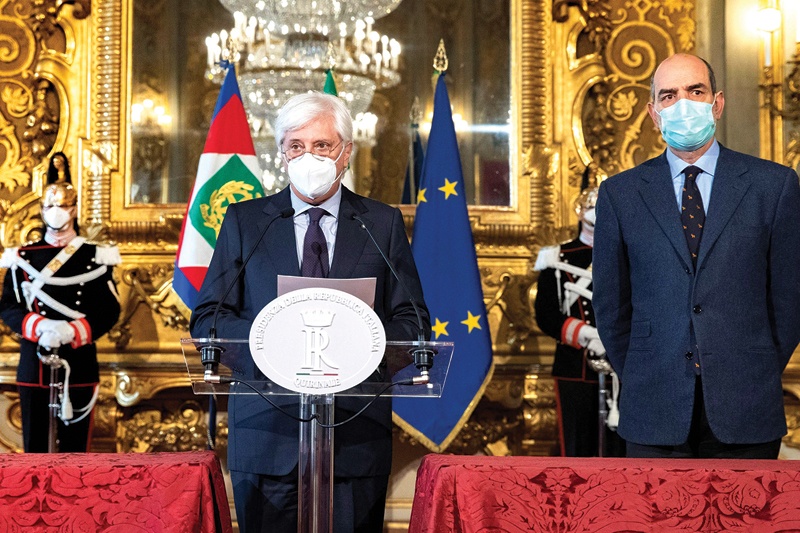 ROME: A handout picture shows Quirinale general secretary Ugo Zampetti reading the official communication of Italian Prime Minister Giuseppe Conte's resignation after a meeting at the Presidential Quirinale palace in Rome yesterday.-AFP
ROME: A handout picture shows Quirinale general secretary Ugo Zampetti reading the official communication of Italian Prime Minister Giuseppe Conte's resignation after a meeting at the Presidential Quirinale palace in Rome yesterday.-AFPROME: Prime Minister Giuseppe Conte's resignation has triggered what Italians call a government crisis "in the dark"-meaning it has no obvious solution. Italian politics is yet again entering uncharted waters, but this time in the middle of a coronavirus pandemic that has killed more than 85,000 people and sparked a devastating recession. Here are some of the possible ways out of the impasse.
Conte III
The crisis was triggered two weeks ago by ex-premier Matteo Renzi's decision to quit the ruling center-left coalition, depriving Conte of a solid parliamentary majority. Conte is now expected to seek from President Sergio Mattarella another mandate to lead what would be his third consecutive government since the 2018 general elections. To succeed, he would need to bring Renzi's Italia Viva party back on board, along with the populist Five Star Movement (M5S) and the center-left Democratic Party (PD) -- Conte's main backers.
The PD has called for a new Conte government with a "wide parliamentary basis", code for enlarging the coalition to include centrists currently in the opposition. The idea is that this would curtail Renzi's veto powers within the coalition. But it is unclear whether enough lawmakers are willing to make the jump.
Conte sacrificed
Renzi, who played a key role in the formation of Conte's second government in 2019, has long made clear he no longer has confidence in the outgoing premier. He may demand the appointment of a new leader as the price of his return within the government coalition. So far, Renzi has been biding his time. Italian media suggest that a PD heavyweight, such as Culture Minister Dario Franceschini, or former M5S leader Luigi Di Maio could be offered the prime minister's job. Another possibility is naming an independent as premier, to prevent rows between the PD and M5S. According to the leftist La Repubblica daily, Conte could serve as a minister in such a cabinet.
Technocrats in charge
If the outgoing ruling coalition cannot be glued back together, Mattarella will likely ask a non-partisan figure to form a so-called national unity government. Centrist backbenchers and ex-premier Silvio Berlusconi's centre-right Forza Italia party might back it, while far-right opposition leaders Matteo Salvini and Giorgia Meloni are unlikely to.
Such a government would be expected to pull Italy through the worst of the COVID-19 pandemic and finalize the country's application for European Union recovery funds, due by late April. Italy is eligible for some 220 billion euros ($267 billion) in loans and grants from Brussels, a massive cash boost crucial to its future prospects.
New elections
The current parliamentary term ends in March 2023, but Mattarella can call snap elections if the political crisis proves intractable-except during a six-month window starting from July. Under the constitution, parliament cannot be dissolved in the last six months of a sitting president's term, and Mattarella's seven-year mandate ends in January 2022. Current opinion polls suggest general elections would hand victory to a right-wing opposition bloc including Salvini's League, Meloni's Brothers of Italy and Berlusconi's Forza Italia. - AFP










